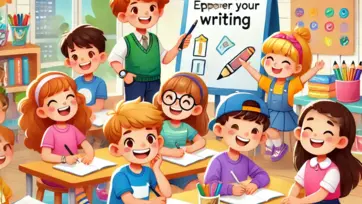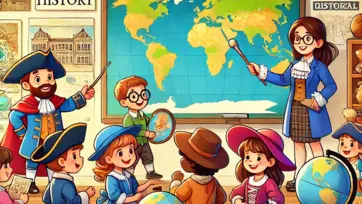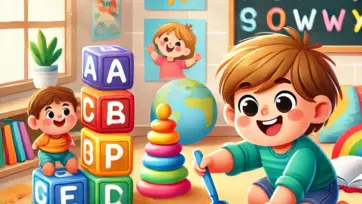Math can be a challenging subject for many kids, but with the right approach, it can also be fun and engaging. By using interactive and hands-on methods, parents and teachers can help children develop a love for numbers while reducing anxiety and frustration. Here are some exciting and stress-free ways to teach math to kids.
1. Turn Math into a Game
Games make learning fun and help kids practice math skills without feeling like they are studying.
Fun Math Games:
- Board games like Monopoly or Snakes and Ladders reinforce counting and number recognition.
- Card games like Uno or Math War help with addition and subtraction.
- Online math games on platforms like Prodigy and Cool Math Games keep kids engaged while learning.
2. Use Real-Life Examples
Applying math to everyday situations helps kids see its importance and relevance.
Ways to Use Math in Daily Life:
- Cooking and baking: Measuring ingredients teaches fractions and conversions.
- Shopping: Comparing prices and calculating discounts makes math practical.
- Telling time: Reading clocks and managing schedules enhances time skills.
3. Incorporate Hands-On Activities
Using hands-on materials can make math more concrete and enjoyable.
Hands-On Math Activities:
- LEGO math: Build structures while learning about patterns, shapes, and counting.
- Playdough numbers: Shape numbers and equations using playdough.
- Counting beads: Use colorful beads to teach addition, subtraction, and multiplication.
4. Make Math a Story
Storytelling helps kids visualize math problems and understand concepts better.
How to Use Stories for Math:
- Read math-related books like "The Grapes of Math" or "Sir Cumference and the First Round Table."
- Create math word problems with characters and real-world scenarios.
- Encourage kids to write their own math stories with numbers and equations.
5. Use Music and Rhymes
Songs and rhymes make memorization easier and more enjoyable.
Fun Math Songs and Rhymes:
- Sing multiplication tables to catchy tunes.
- Use counting songs like “Five Little Monkeys” to teach subtraction.
- Clap or tap rhythms to learn number patterns and sequences.
6. Encourage Friendly Competitions
Healthy competition can motivate kids to practice math skills.
Ways to Create Math Challenges:
- Set up a math race where kids solve problems quickly.
- Host a math trivia game with small rewards.
- Create a scavenger hunt where they solve clues using math.
7. Use Visual Aids and Charts
Visual representations make math easier to understand and remember.
Helpful Math Visuals:
- Number charts and multiplication tables.
- Graphs and bar charts to track progress.
- Flashcards for quick recall of math facts.
8. Provide Positive Reinforcement
Encouragement and praise can help build a child’s confidence in math.
Ways to Encourage Kids in Math:
- Celebrate small achievements and progress.
- Offer stickers, certificates, or verbal praise for effort.
- Remind them that making mistakes is part of learning.
9. Introduce Technology and Apps
Technology offers interactive and fun ways to learn math.
Recommended Math Apps:
- Prodigy Math Game – A role-playing math adventure.
- Mathway – Helps kids solve and understand math problems.
- SplashLearn – Fun lessons and exercises for various math levels.
10. Make Learning Collaborative
Working together with others can make math more enjoyable and less intimidating.
Ways to Make Math Social:
- Solve problems as a team with friends or family.
- Pair older and younger kids for peer learning.
- Join a math club or participate in group activities.
Conclusion
Teaching math doesn’t have to be stressful! By incorporating games, stories, real-life applications, and hands-on activities, children can develop a positive attitude towards math. Encouraging curiosity, creativity, and confidence will make math learning an enjoyable experience for kids and help them succeed in the subject without pressure.








